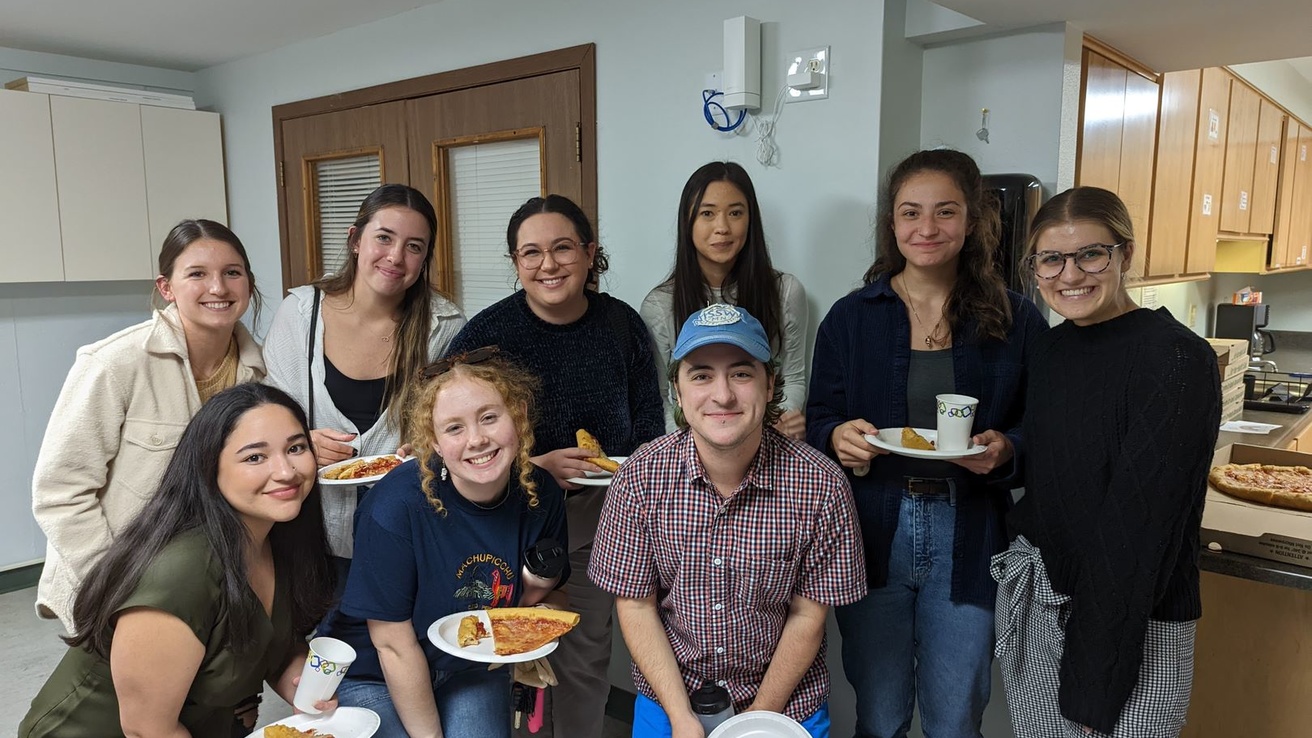By Katie Linder
It’s a challenging situation.
When a young child is first learning English and appears to struggle with communication in the classroom, it can be challenging to know if it’s related to learning a new language or from an undiagnosed language disorder.
This is the reality for preschool teachers at Neighborhood Centers of Johnson County, a community-based human service agency that provides preschool and after-school programming to families in Iowa City. Many of the children enrolled at the centers are dual-language learners and are from immigrant households where they speak a variety of languages including Spanish, Swahili, Arabic, French, Lingala, Oromo, and Portuguese—in addition to English.
“It doesn’t feel good when you are referring a child for services and it’s not actually a problem—but rather a reflection of their unique language exposure,” says Philip Combiths, an assistant professor in the UI Department of Communication Sciences and Disorders and director of the Clinical Linguistics and Disparities Lab at Iowa. “But it also doesn’t feel good when you wait on a referral because you aren’t sure.”
Combiths and a group of undergraduate researchers are trying to help. They are piloting a community-engaged research project that aims to take the uncertainty out of the referral process for early education teachers at the centers, while also supporting language development in the classroom.

The project utilizes a tiered system as part of the preschool curriculum, giving undergraduate students a unique experience to work directly with about 40 young, diverse-language speakers. The first tier calls for classroom-wide lessons, like interactive storybook readings, throughout the school year. Following the larger-group sessions, the children who could benefit from extra support participate in smaller-group activities that focus on language development. From there, it becomes much clearer if their language is developing typically or if a clinical referral is truly needed.
“We are helping the teachers with identifying a need for a referral to a speech-language pathologist while also providing opportunities for more pre-literacy development that benefits everyone,” Combiths says.
While visiting the centers, undergraduate researchers also collect information about the kids’ general language development during structured play sessions, which helps with their individual evaluations. While this benefits each child, it also provides rich data on how culturally and linguistically diverse kids are developing language more generally—which is currently under-researched in an English-dominated field.
Beyond helping teachers and families, the project also benefits undergraduate students in CSD who gain experience that will prepare them for graduate school to pursue careers in speech-language pathology or audiology.

Emily Hartman is a fourth-year undergraduate student studying speech and hearing sciences with minors in American Sign Language and fine arts. She plans to apply to graduate school to pursue a career in providing speech and language services to children. She says her experience working with Combiths and the centers has given her skills that she will take with her.
“Dr. Combiths has helped me to learn about all things that go into developing a research project such as formulating a research question, how to detail proposed project details and research methods and then get them approved through the IRB, and finally, how to collect and analyze data,” Hartman says.
Combiths says the kind of experience Hartman and her peers are receiving isn’t overly common.
“Undergraduates don’t always get a lot of clinical experience to help them know what the field is like,” Combiths explains. “They are looking for experience, and to do it in a context where they are exposed to many different kids from cultural backgrounds that are different from their own while also learning to interact and appreciate each child as a unique individual is a meaningful experience.”
For Hartman it isn’t just about skill building, it’s more about building connections with families.
“To me, there is no better reward than connecting with a child, despite any language barrier,” she says. “Seeing their faces light up as they communicate and learn . . . that is the sole reason I am studying in this field.”
The UI College of Liberal Arts and Sciences is home to renowned communication sciences and disorders programs, ranking second in audiology and sixth in speech pathology, according to U.S. News and World Report.